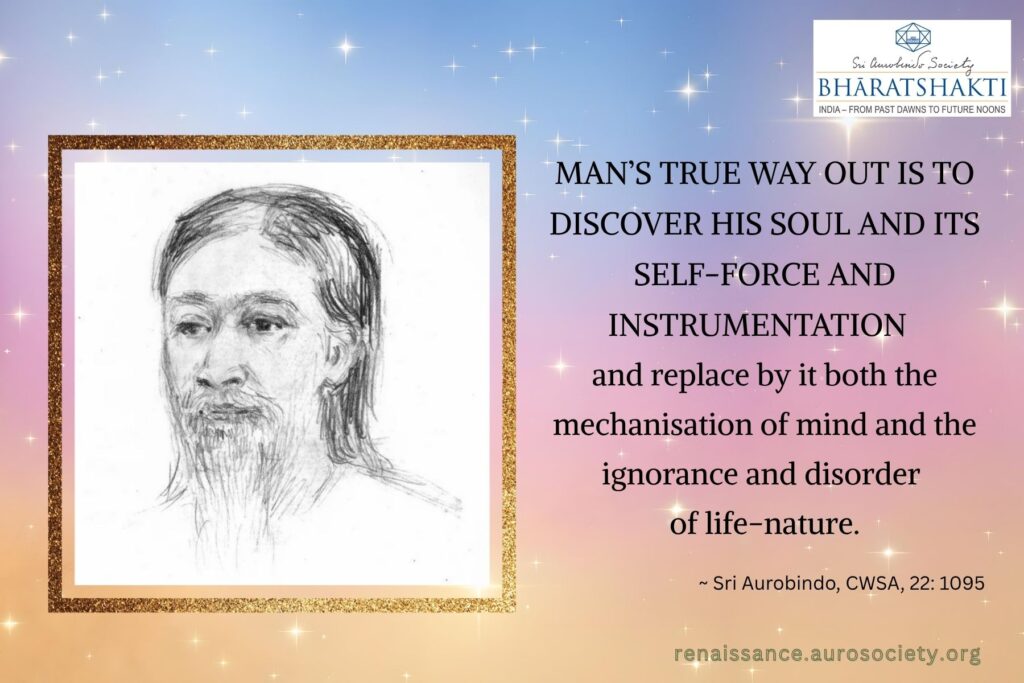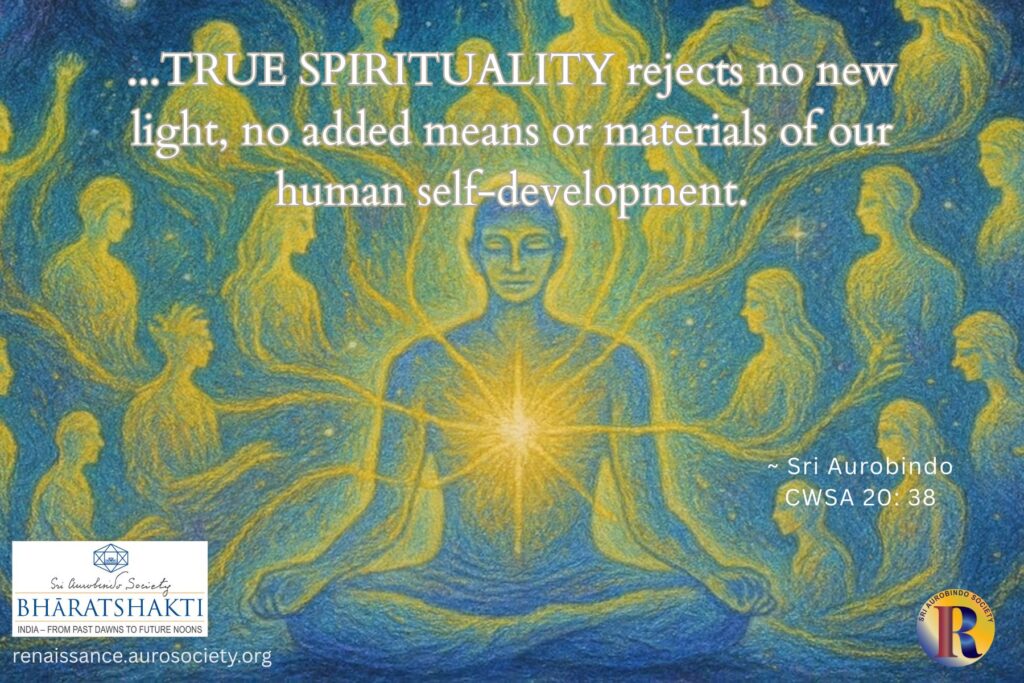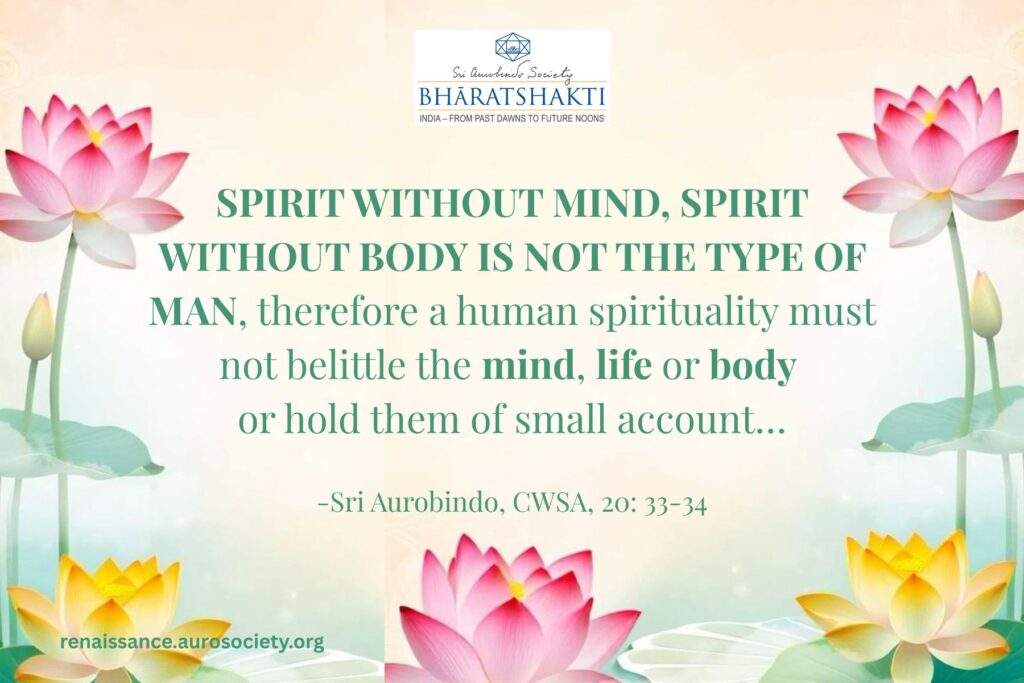Volume VI, Issue 1
Author: Beloo Mehra
“…everyone who has at all the Indian spirit and feeling, can at least give some account of the main, the central things which constitute for him the appeal of Indian painting, sculpture and architecture.”
~ Sri Aurobindo, CWSA, Vol. 20, p. 261
The sacred buildings of India are the architectural self-expression of an ancient spiritual and religious culture. Only with an inner study we can grasp the true significance of such architecture. It requires a spiritual self-identification with the deepest meaning hidden in the form. Seeing only with a rational and secular aesthetic mind we can never develop a true appreciation of this art.
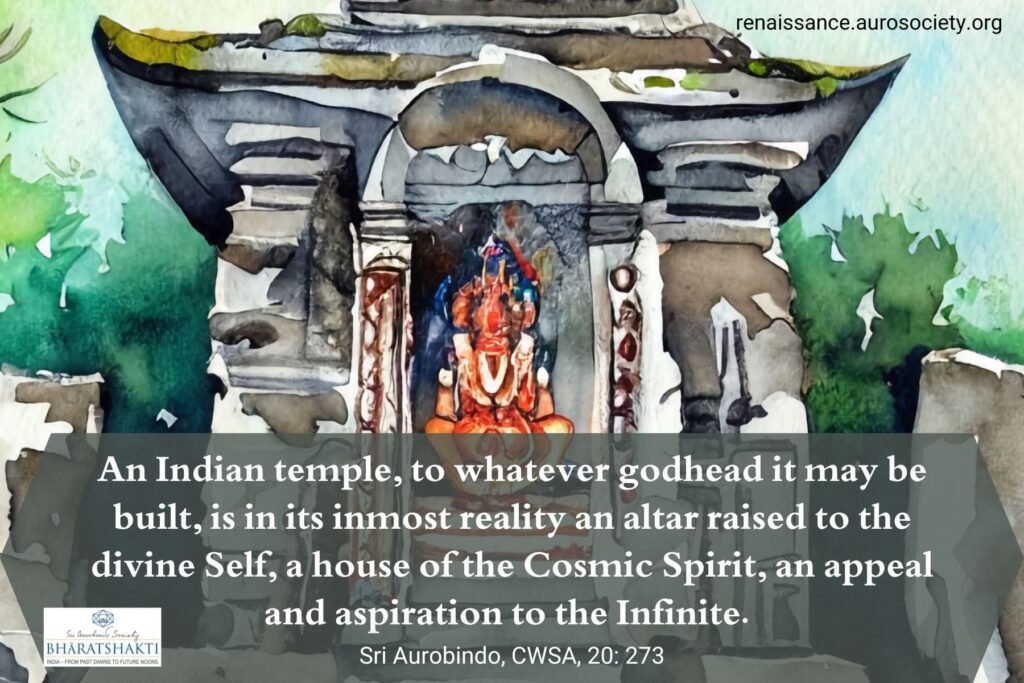
To an Indian mind, the temple is the representation of the cosmos. And it is so both at the level of the universe and the individual. This is what makes it possible for the devotee to get inspired in a temple. Some may visit a temple merely as a ritual or by habit. But to a conscious seeker and bhakta, a temple is essentially that sacred space where the heart aspires and strives for spiritual transformation. Just like tīrtha-yatra, pilgrimage to sacred places and going for the darshan of the Deity in the temple are intrinsic parts of the dharmic culture of this land.
“Temples are built where Tīrthas are; their towering shapes to the last point of their height teem with forms which have the urge and fullness of Indian nature; step by step, level by level they lead the eye and mind of the devotee from this world to the world above.”
~ Stella Kramrisch, The Hindu Temple, p. 6
Soak in some beauty of Indian temple architecture through this short video
One of the most commonly used words for a temple in the architectural texts of India is “Prāsāda”. The word actually denotes a settling down and a seat made of that which has settled down and acquired concrete form. This is the form of a dwelling, a residence, the seat of God. The popular etymological sense of the word Prāsāda, as per Śilparatna, is that which pleases by its beauty, the minds of gods and men.
Unity and Multiplicity in Temple Design
“An Indian temple, to whatever godhead it may be built, is in its inmost reality an altar raised to the divine Self, a house of the Cosmic Spirit, an appeal and aspiration to the Infinite.”
If we fail to see an Indian temple in the light of this truth and stay confined to a narrow conception of rational or material beauty and an intellectual interpretation we will never appreciate the true significance of this sacred architecture. An Indian temple is a house of the Cosmic Spirit. Its significance must be experienced through some responding intuition and revelation in us, in our own soul, our own self.
Sri Aurobindo helps us understand that all art reposes on some unity. Its details may be few and sparing or lavish and crowded and full. But they must go back to that unity and help its significance. Otherwise it is not art. If we only look at the crowded ornamentation and splendid details of a majestic Indian temple and never go deep enough to realise within ourselves the underlying oneness of spirit that the temple is expressing, we miss out on the inner significance of the temple.
Indian sacred architecture tries to figure existence as a whole and not in its pieces.
Sri Aurobindo explains what is unique about the unity or oneness that an Indian temple expresses. He says this is not the kind of unity gained by much suppression and a sparing use of detail and circumstance. That was the case with ancient Greek architecture. Nor is it the kind of unity which was achieved in Gothic buildings by casting everything into the mould of a single spiritual aspiration.
Indian sacred architecture begins with the conception of an original oneness. It is not a combined or synthetic or an effected unity. A temple constantly represents the greatest oneness of the self, the cosmic, the infinite in the immensity of its world-design, the multitude of its features of self-expression. Yet the oneness is greater than and independent of their totality and in itself indefinable.
As per Sri Aurobindo the multitudinous and abundant ornamentation of a temple actually reveals the underlying unity beyond it. He says in his poetic style:
“All its starting-point of unity in conception, its mass of design and immensity of material, its crowding abundance of significant ornament and detail and its return towards oneness are only intelligible as necessary circumstances of this poem, this epic or this lyric—for there are smaller structures which are such lyrics —of the Infinite.”
~ CWSA, Vol. 20, p. 276
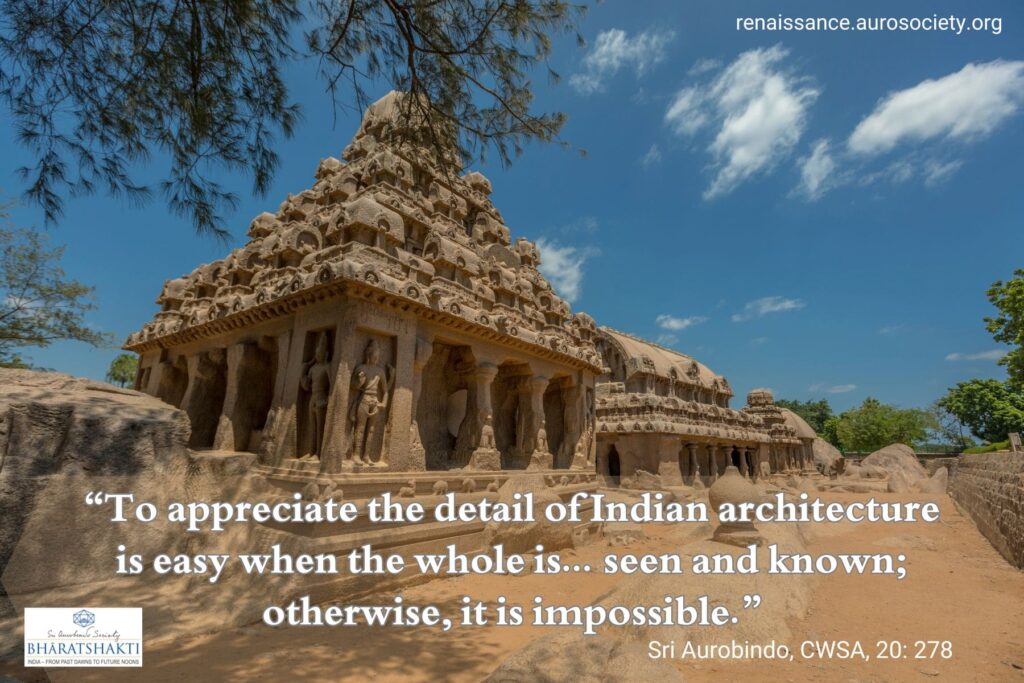
Appreciating the Significance of Indian Temple Design
“To appreciate the detail of Indian architecture is easy when the whole is…seen and known; otherwise, it is impossible.”
~ Sri Aurobindo, CWSA, Vol. 20, p. 278
When we see closely a grand Indian temple, we find a constant, subtle yet pronounced lessening from the base towards the top. But at each stage we see a repetition of the same form, the same multiplicity of insistence, the same crowded fullness and indented relief.
To find the significance of it all it is necessary to have some deeper cultural training. We can then reinterpret the temple’s representation in terms of our own spiritual self-existence and cosmic being.
- It requires us to first feel within the oneness of the infinity in which the natural surroundings of the temple and the temple itself live.
- There is a need for an inward turning to see the temple in its abundant expression as the sign of the infinite multiplicity which fills this oneness.
- An inner eye also sees in the regular lessening ascent of the edifice the subtler and subtler return from the base on earth to the original unity and seize on the symbolic indication of its close at the top.
- When we are able to see the whole temple in its surroundings in this light, a tremendous sense of inner unity is revealed.
In This Issue
The current issue focused on Indian Sacred Architecture takes us deeper into some of the key points mentioned above. This is the fifth theme we are exploring in our ongoing series on The Spirit and Forms of Indian Art. The earlier themes included — The Purpose of Art: From Beauty to Bliss, The Sacred Origins of Indian Art, The Way of the Indian Artist and Art as Yoga.
The issue opens with a 2-part feature titled An Indian Temple in its Inmost Reality. It presents selections from Sri Aurobindo’s brilliant essay on Indian architecture. These passages describe the deepest inner significance and symbolism of an Indian temple.
The first part focuses on how one must ‘see’ the temple to get closer to the truth it represents in its architectural content. In the second part, Sri Aurobindo helps us understand that in its inmost reality, a temple symbolizes spiritual aspiration. Its rich details and ornamentation represent the infinite multiplicity in Infinite Oneness.
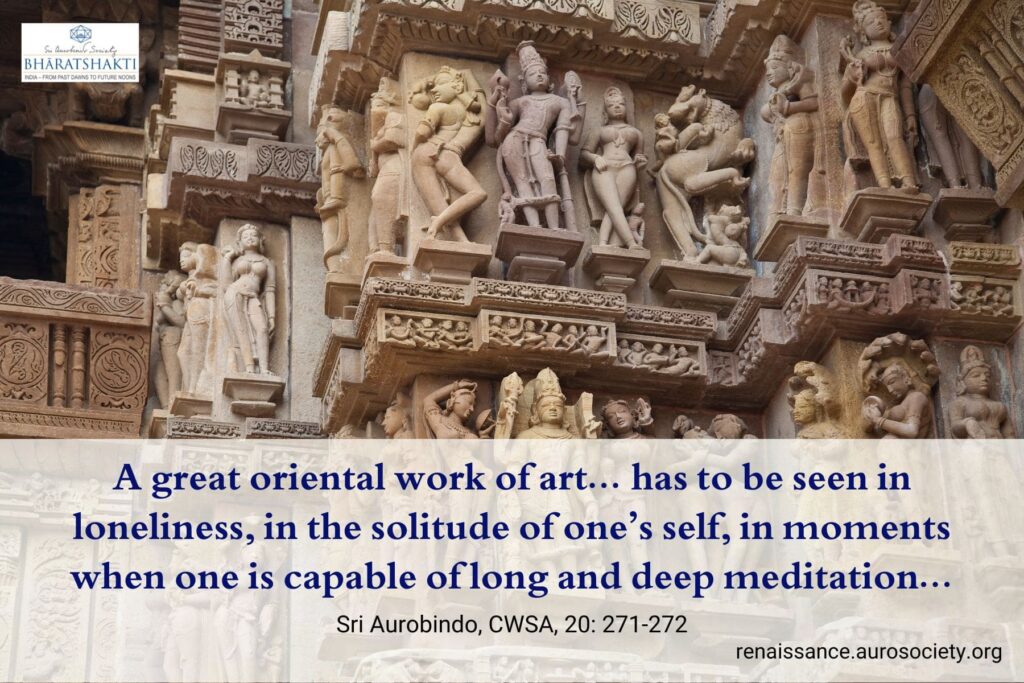
Flip and Read
On Indian Art
The temple heritage is perhaps the most visible and material record of the spiritual evolution of Indian civilization. In the article titled The Vedic Spirit and the Temple Design read an overview of some of the ways in which a temple continues to embody and give a new form to the ancient Vedic spirit.
The Śilparatna says that the temple, prāsāda, should be worshipped as Puruṣa. Stella Kramrisch explains this Puruṣa. She also describes how the temple as a work of architecture represents the body of this Puruṣa. We feature excerpts from one of her talks which highlight the inner symbolism of the temple and exemplify the sacredness of its entire architectural plan.
Matrimandir: An Impressionistic Picture by Nirodbaran was first published in Auroville Today, August 1992. It was later reprinted in Mother India in January 1993. The year 1992 must be kept in consideration when reading this account. In “Temple-Tower to Heaven”, in Sri Aurobindo’s Savitri, M.P. Pandit connects King Aswapathy’s visions of the “world-pile”, “mountain chariot of the Gods” and “the single stair to being’s goal” to the image of a temple tower.
In Part 3 of our continuing series titled Aims of Indian Art, Ananda Coomaraswamy describes that the temple design suggests and symbolizes the Universe. The site of a temple or town is laid out in relation to astrological observations. Every stone has its place in the cosmic design.
Temple Trails
The current issue also includes some delightful accounts of selected temples. Shruti Bidwaikar recounts her unforgettable visit to the magnificent temples at Halebidu and Belur, two prime examples of Hoysala temple architecture. Read and appreciate how Indian sacred architecture like all Indian art reveals its true meaning and spirit only when ‘seen’ with an inner vision.
In a 2-part feature, Jishnu Guha takes us on a detailed tour of the magnificent Sun temple at Modhera, Gujarat. One of the most remarkable examples of rhythm and harmony carved in stone, this temple is a marvelous representative of India’s ceaseless creative spirit which constantly sought to express the deepest spiritual truth of life.
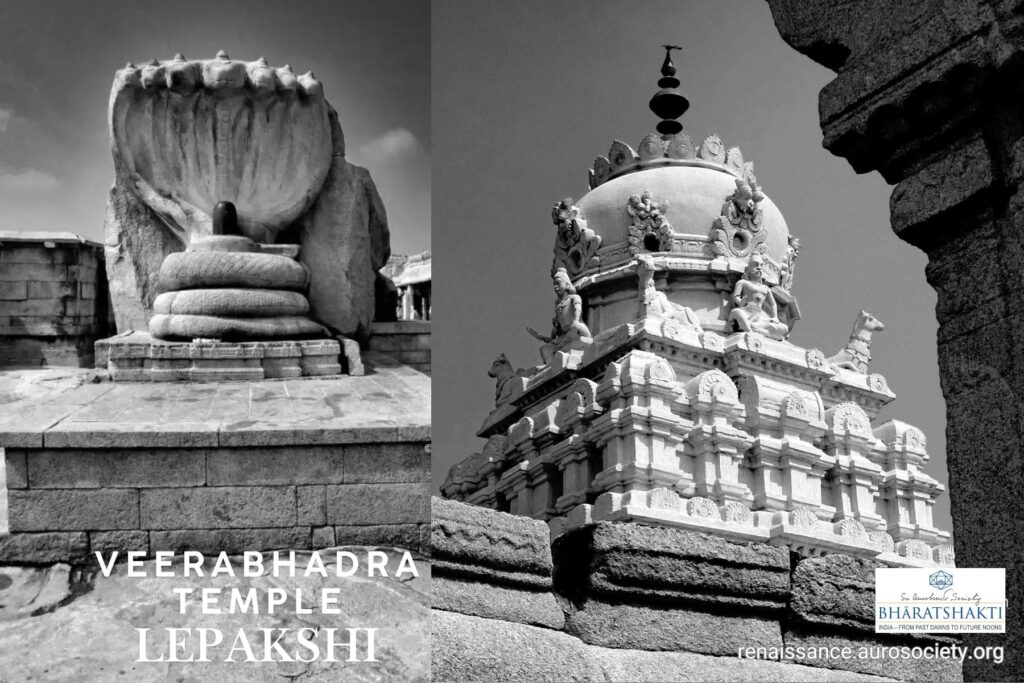
Experience a virtual walk-through with me of Sri Veerabhadra temple at Lepaskhi. Two parts of this photo-essay are presented in the present issue. The first part focuses on the exterior of Veerabhadra temple, pointing out its magnificent architectural and sculptural beauty. Part 2 takes the reader toward the interior of the mandir.
Vidya Raman presents a brief account of a special temple located in Srivilliputhur, dedicated to Andal, the only female Alwar among the twelve Vaishnava poet-saints of South India. Believed to be an Avatar of Ma Lakshmi, Andal was a great devotee of Sri Vishnu. We open with a small passage by Sri Aurobindo on Andal. He translated three of her poems into English.
Narendra Murty contributes a photo-tour of Angkor Wat and Bayun in Cambodia. Indian rock-cut architecture had deeply influenced Khmer temple architecture. This was part of what Sri Aurobindo calls as “invasion of peace”, towards the Far East and South East Asia. It saw the expansion of Indian culture, spirituality, art and thought-forces.
We hope our readers will enjoy going through the various offerings in this issue. As always, we offer this work at the lotus feet of Sri Aurobindo and the Mother.
In gratitude,
Beloo Mehra (for Renaissance Editorial Team)

